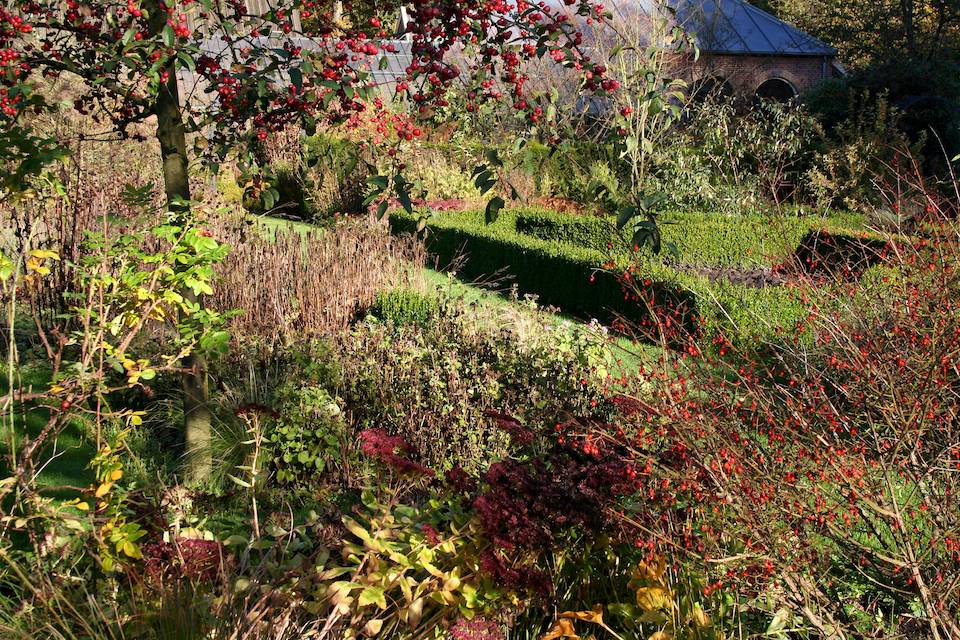The village of Geldrop, probably means precious little to most on our side of the channel. The odd Olympic enthusiast may vaguely remember it for being home to the triple Olympic swimming champion; Pieter van den Hoogenband. Others, may have read about this small Dutch hamlet for its rather curious devotion to Tolkien, with streets named; ‘Gollum’, ‘Frodo’, ‘Gandalf’, Aragorn’, ‘Pippin’, ‘Eowyn’, ‘Eomer’ and other pointy-eared-big-footed cast members featured in the good man’s epic odyssey. Oddly though, Bilbo Baggins, whom despite his starring role, seems to have fallen out of favour with the good people of Geldrop, as there isn’t a single street named after him.
I digress my apologies. Geldrop is a small village located in the south of the Netherlands. Not until the end of last year, did I know that tucked away behind the village castle, and hidden amongst Tolkien’s Middle-earth of the low countries, lies a stunning garden. A much favoured kind; a walled garden.
A touch of the Dutch Master
Conventional to a castle, the garden is traditional, almost renaissance-esque with its profusion of symmetrical, sharply trimmed box hedges and forms, rooted in the traditions of formality, parterres and potagers. However, unusually the razor-sharp geometric hedges, restrain oodles of tall perennials and grasses, planted very much in the style of Piet Oudolf.
The result is a delightful mass of wild eruptions of grasses, and a modern blend of perennials such as; eupatorium, aster, fennel, salvia, echinacea, rudbeckia and monarda, peering over the tight maze of box hedges. The soft planting provides a wonderful contrast to the linear, imposing enclosure of the hedges and the majestic garden walls.
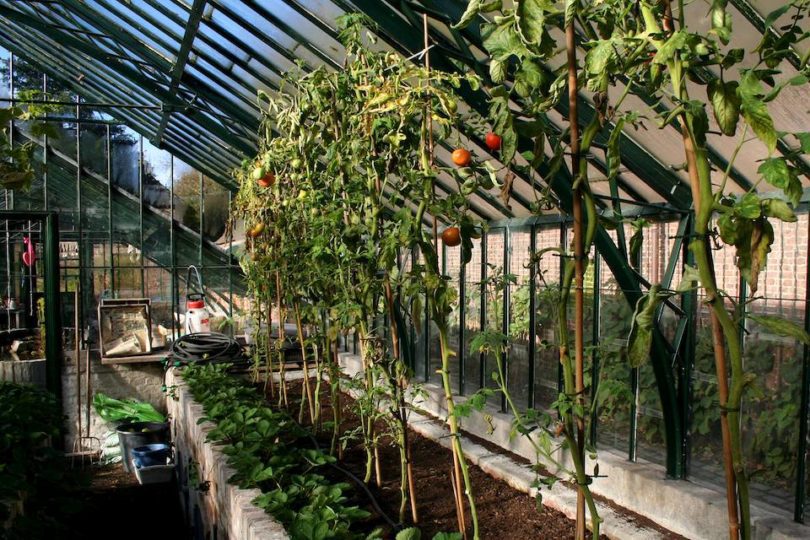
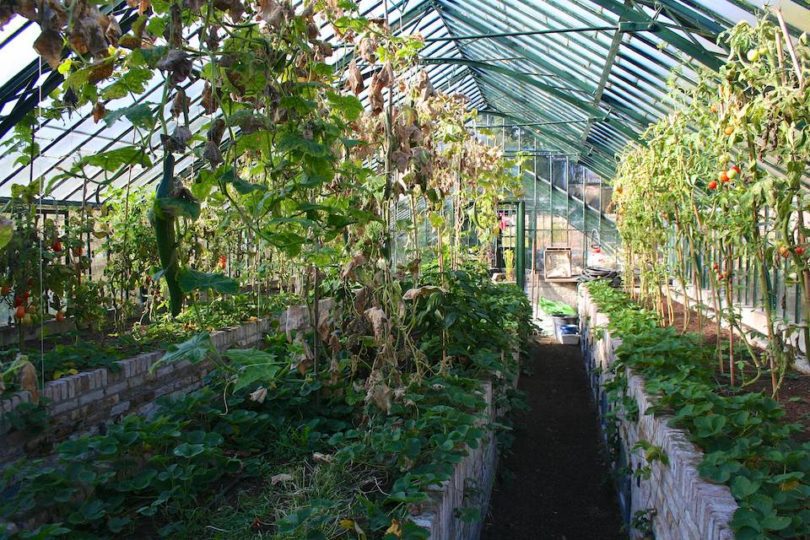
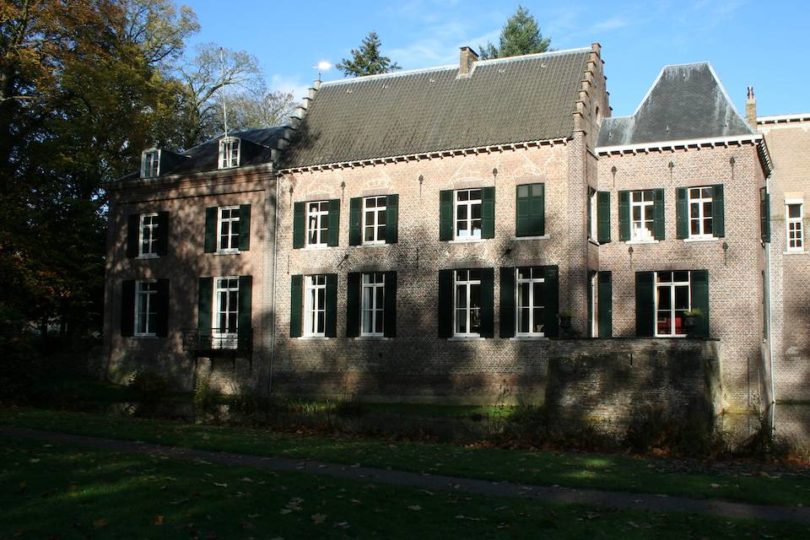
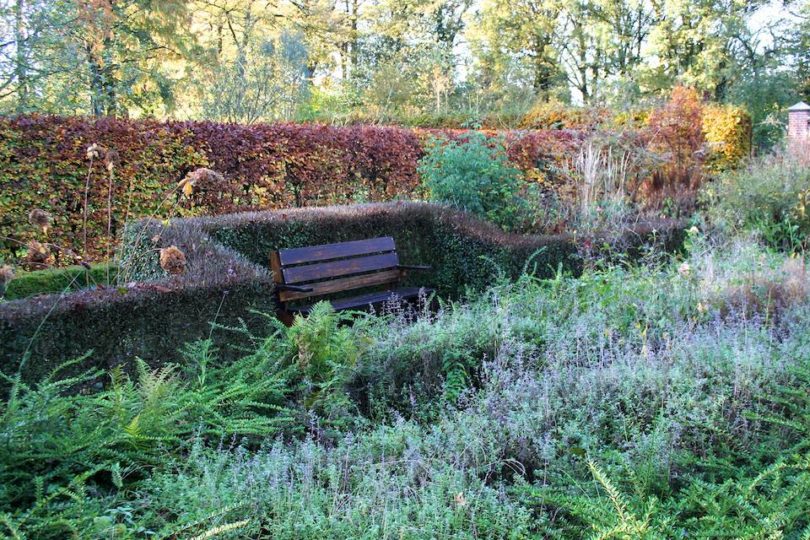
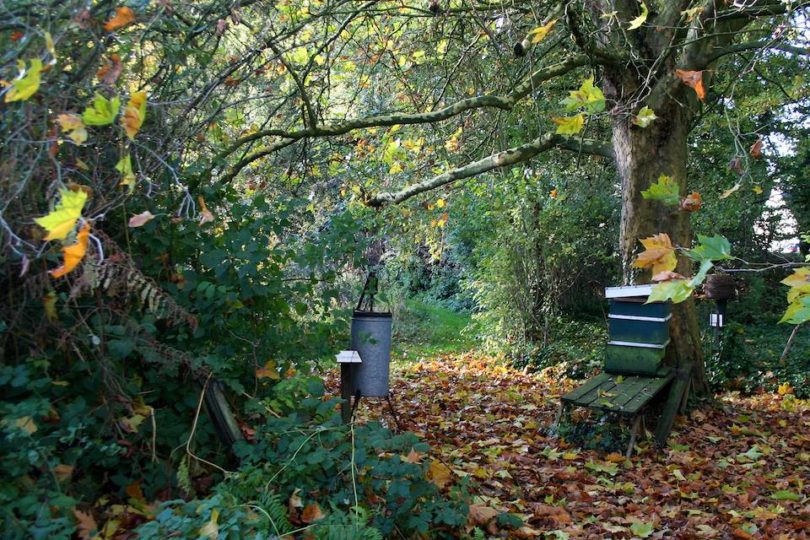
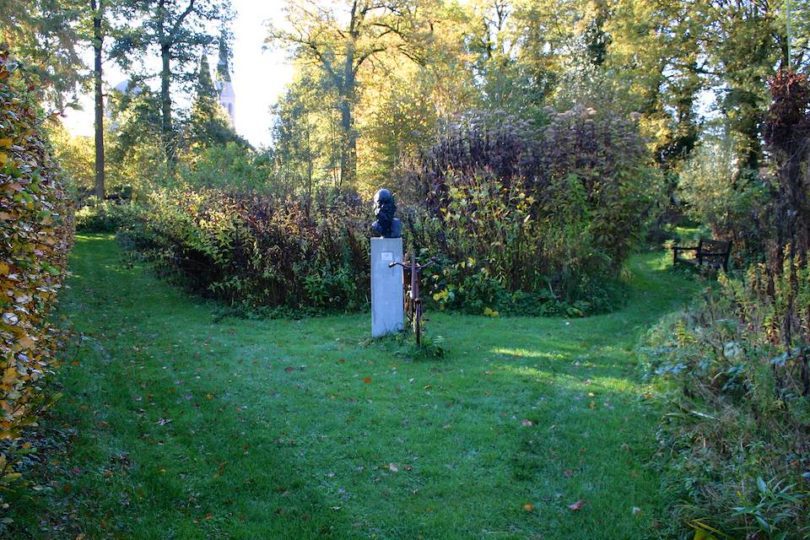
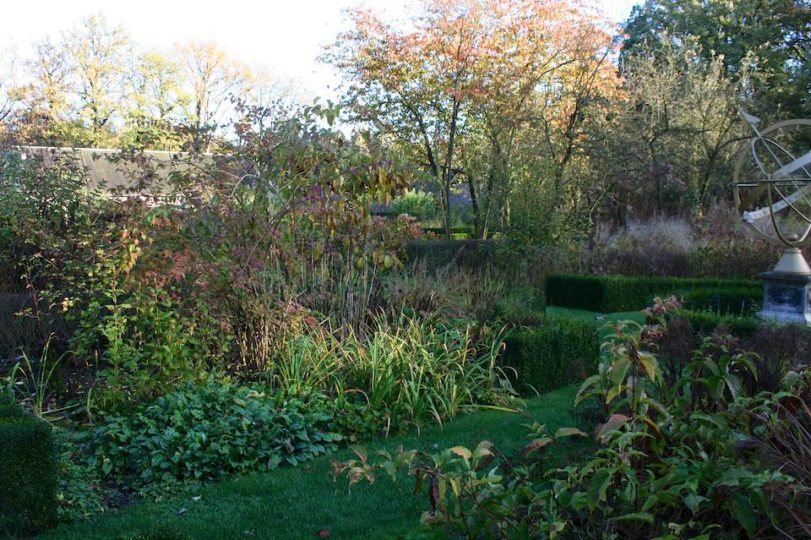

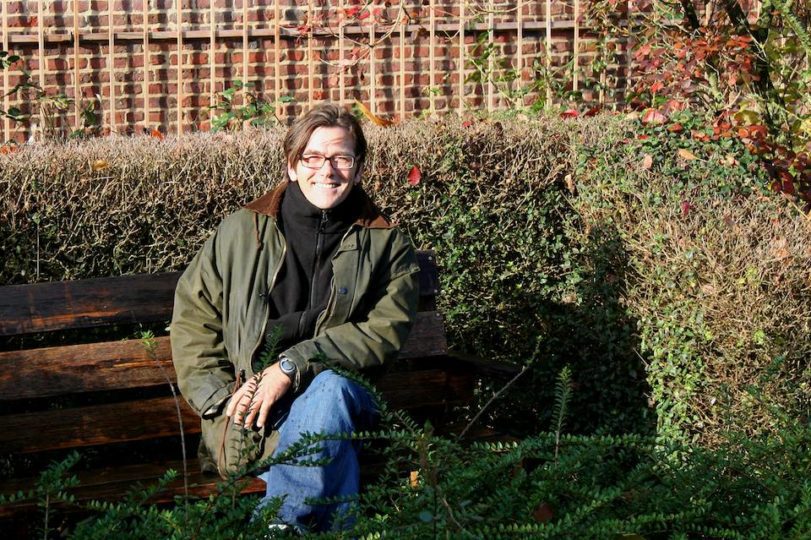
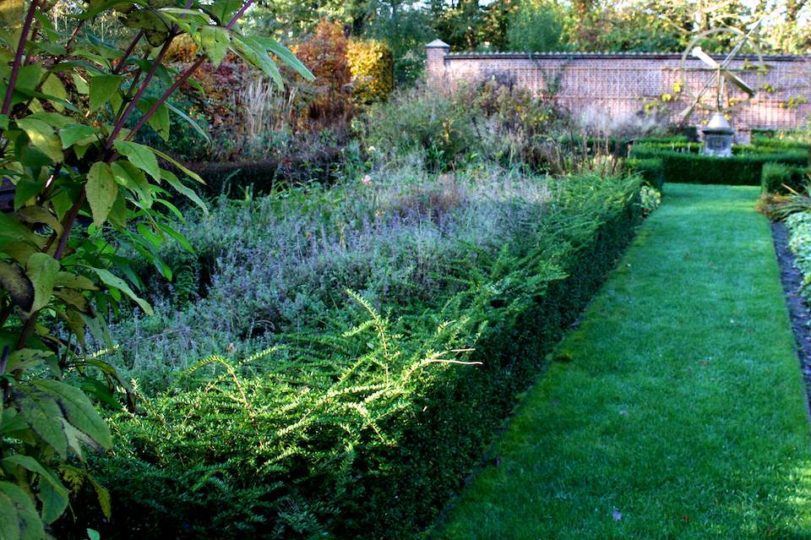
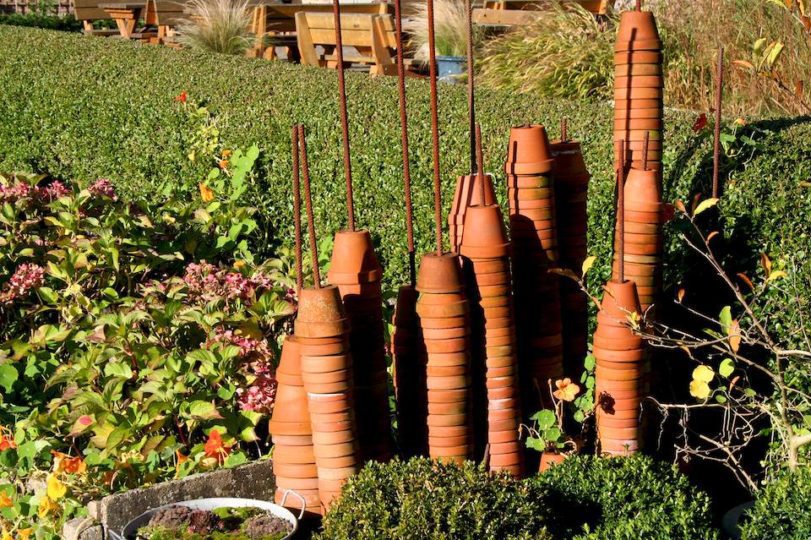

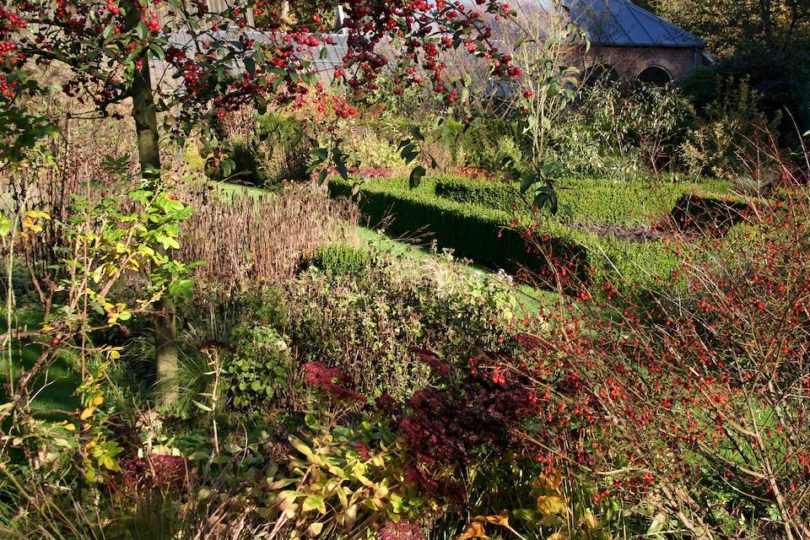
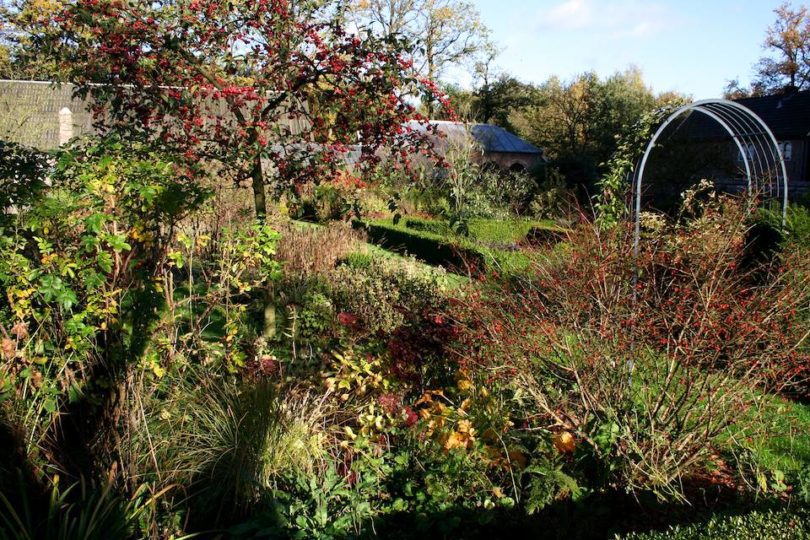
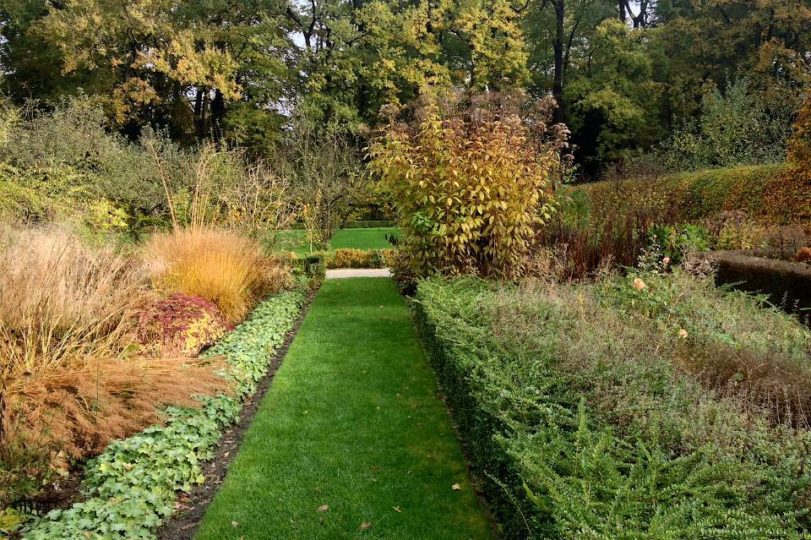
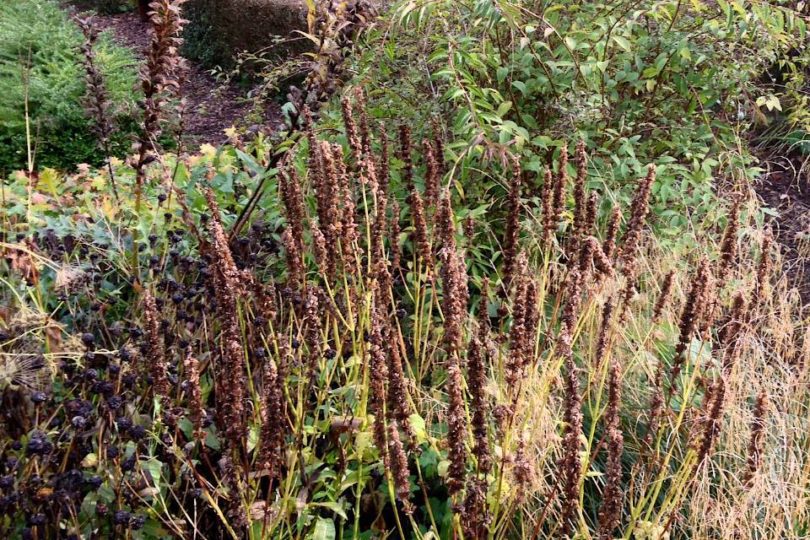
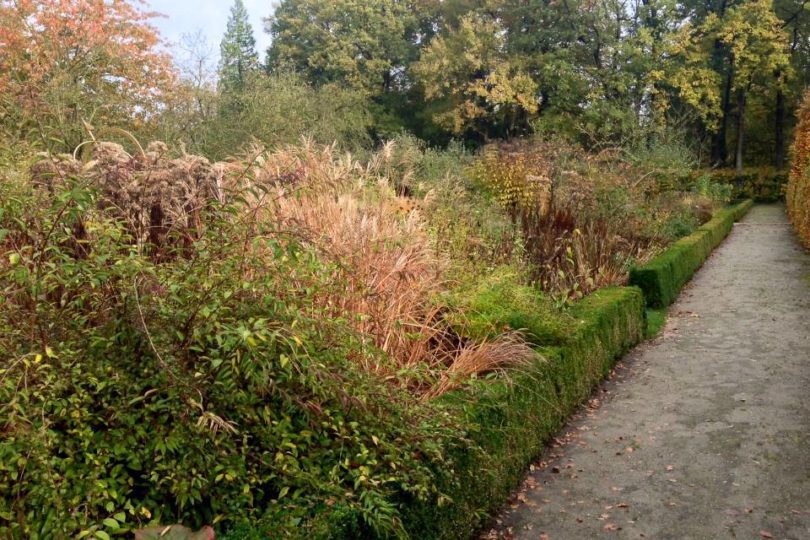
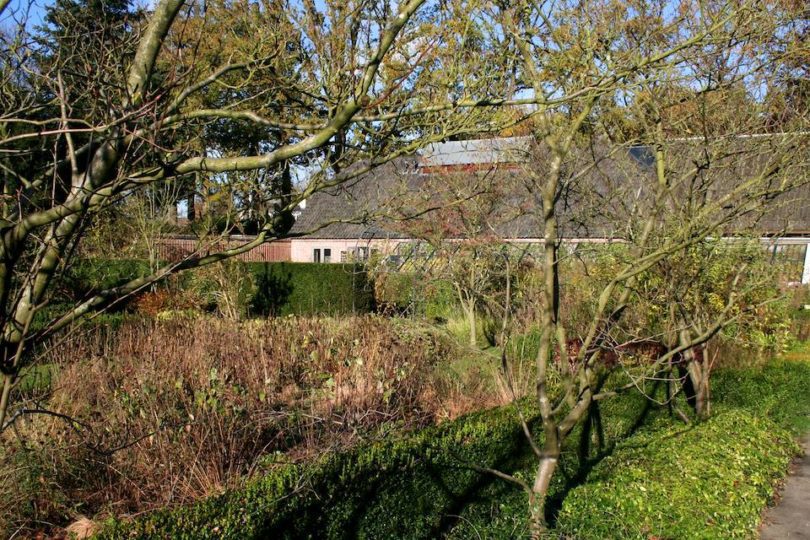





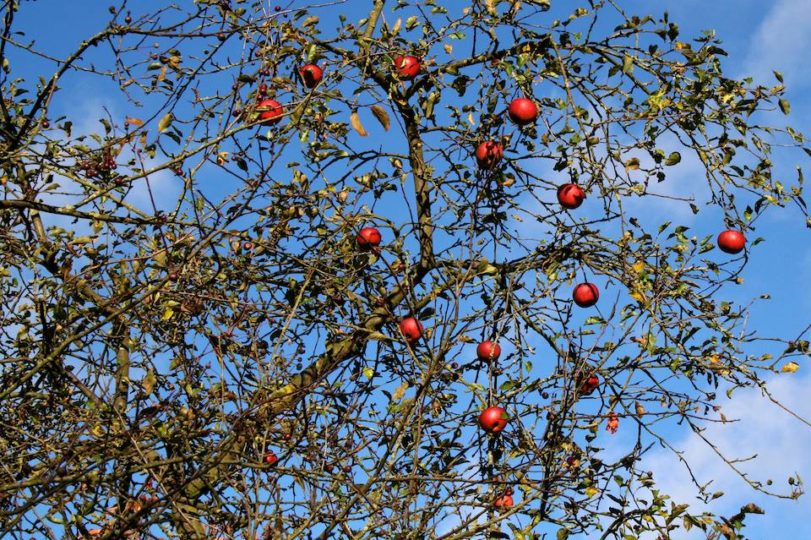
This garden is not only beautiful, but interesting as it presents an opportunity, for those keen to add some of that Oudolf magic to a more traditional, formal garden. Furthermore, the garden proves that one doesn’t need endless open sprawling space to create that never-ending Oudolf effect. A confined, formal space can lend itself beautifully to the New Perennial Movement. With bells on.
The designers
Fortuitously, hired in 2005, the talented designer, John Schoolmeesters and his wife Cill Neggers, have single handedly redesigned and renovated the walled garden, to its current enchanted state. Schoolmeesters, a product of the horticultural trade was approached whilst still running his rose budding business, to renovate and manage the garden full time. Though, the prospect of renovating the 5000m2 historical garden, with shoestring funds, and armed with just his own and his wife’s hands, was rather daunting.
Thankfully for the garden, they did, and work started in ernest, on the then seriously dilapidated garden.
Oudolf in miniature
News of the Schoolmeesters’ arrival spread, and help from the local community generated a much needed, though still challengingly tight budget for the scale of the operation. The couple, working on their own, cleared the entire garden, and started work on renovating the vegetable garden, and the cutting patch that supplied the castle with its daily flower requirements. Initially, renovation was very much the order of the day, renewing the box hedges with home-grown cutting material, clipping back the multitude of formal rose beds, planting cutting borders, but soon the budding designer wanted to do more.
Inspired, by a garden designed by Piet Oudolf at the museum of modern art; the Van Abbe Museum in Eindhoven, the duo decided to recreate that wild perennial abandon within the formal confines of the walled garden. The result is wonderful, where despite its über modern edge, the garden feels very much part of the formal castle grounds.
Adding to the effect, the formal hedges have been enhanced to include a variation of leaf texture, by using not just buxus, but Lonicera nitida, Carpinus betulus and Fagus sylvatica. In addition, artful clipping of hedges in varying heights and styles, further teases the formal structure of the garden. I was particularly fond of the Ligustrum vulgare hedges that were clipped to ‘camouflage’ the various benches around the garden. The Lonicera nitida also had a rather ingenous crop, in that it was tightly clipped around the sides but the top growth was left natural and wild. Just lovely, and a technique we will certainly be using in our garden.
The designers were naturally keen to keep the ancient fruit trees dotted throughout the garden. Unlike a traditional Oudolf, where perennials rule and trees are pretty much non-existent, the trees soften the effect further, adding a wonderful three dimensional edge to the space.
Pollinator utopia
Very much the product of organic horticulture, the duo are keen to not only use plants that are by nature sustainable, hence perennials, but plants that pretty much look after themselves, hence that require little staking or fuss. Furthermore, value to pollinators is crucial to encourage as many natural predators into the garden as possible.
Behind the walled garden lies a delightful wildlife garden, where weeds and natural flowers rule. The only intervention is the mowing of a few paths to allow for access to the collection of beehives, compost heaps and wood storage, for the rest this garden very much looks after itself and its crucial inhabitants.
Off the beaten track
Granted visiting this garden whilst nearing its annual dormancy (October) isn’t ideal, as it should be seen in its prime. However, seeing a garden’s bare bones, where the structure is revealed without the distraction of the (flowering) plants is quite fascinating. Credit to the designers too, as despite it nearing its annual slumber, the garden was still exquisitely beautiful. According the great Jacques Wirtz, a garden that is beautiful out of season, is the definition of a good garden. Very much the case here.
Now, I realise this garden isn’t around the corner, nor is it fortuitously located in the vicinity of an attractive tourist trap, but it is without doubt an enlightening visit if you happen to find yourself in the area. Eindhoven, a city just a stone’s throw away has an airport serviced by Mr-Michael-please-flap-your-arms-vigorously-to-fly-cheaper-and-don’t-even-think-of-using-the-loo-O’Leary, and recently became known as the ‘Brainport’ city in light of the profusion of rather clever, technology-minded, people that service Silicon Valley.
All that modernism and innovation, has certainly rubbed off on John Schoolmeesters. An enthusiast of all things horticulture, who along with his talented wife, brought a very traditional garden, into the 21st century. To me, he personifies everything that is wonderful about the horticultural industry, where despite seemingly insurmountable barriers, he persevered for nothing other than sheer passion and respect for plants.
I look forward to visiting the garden again in the near future.
